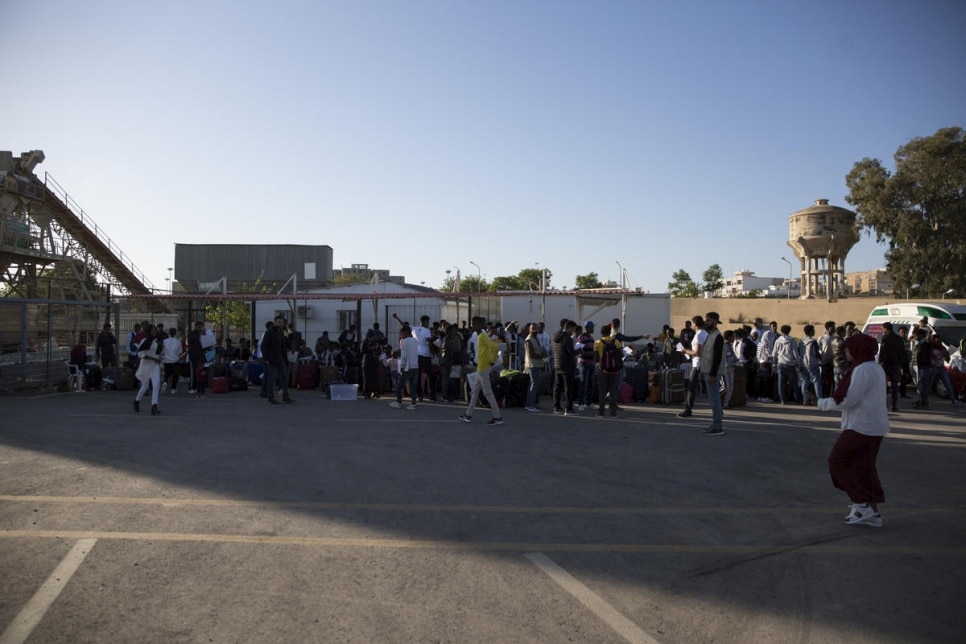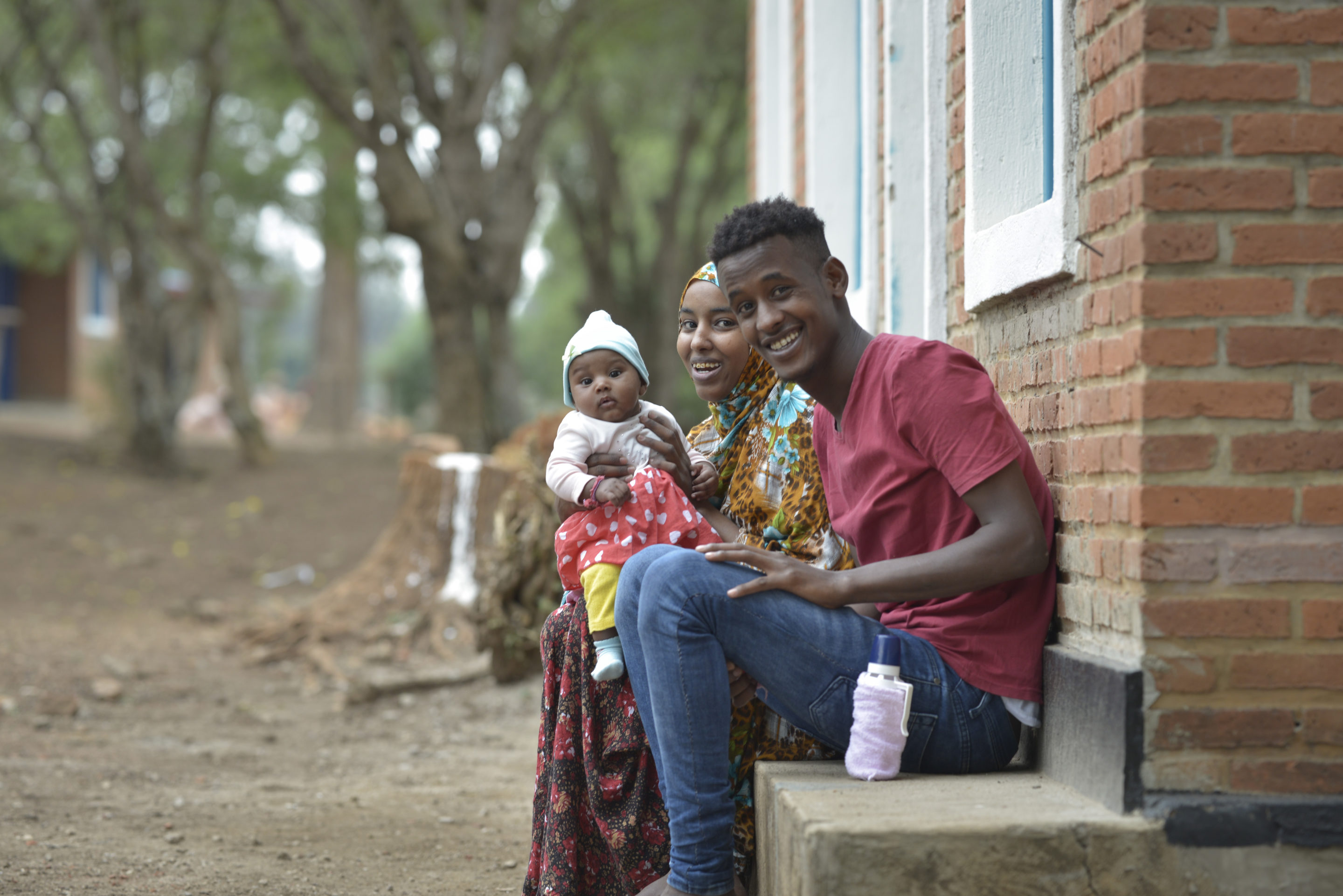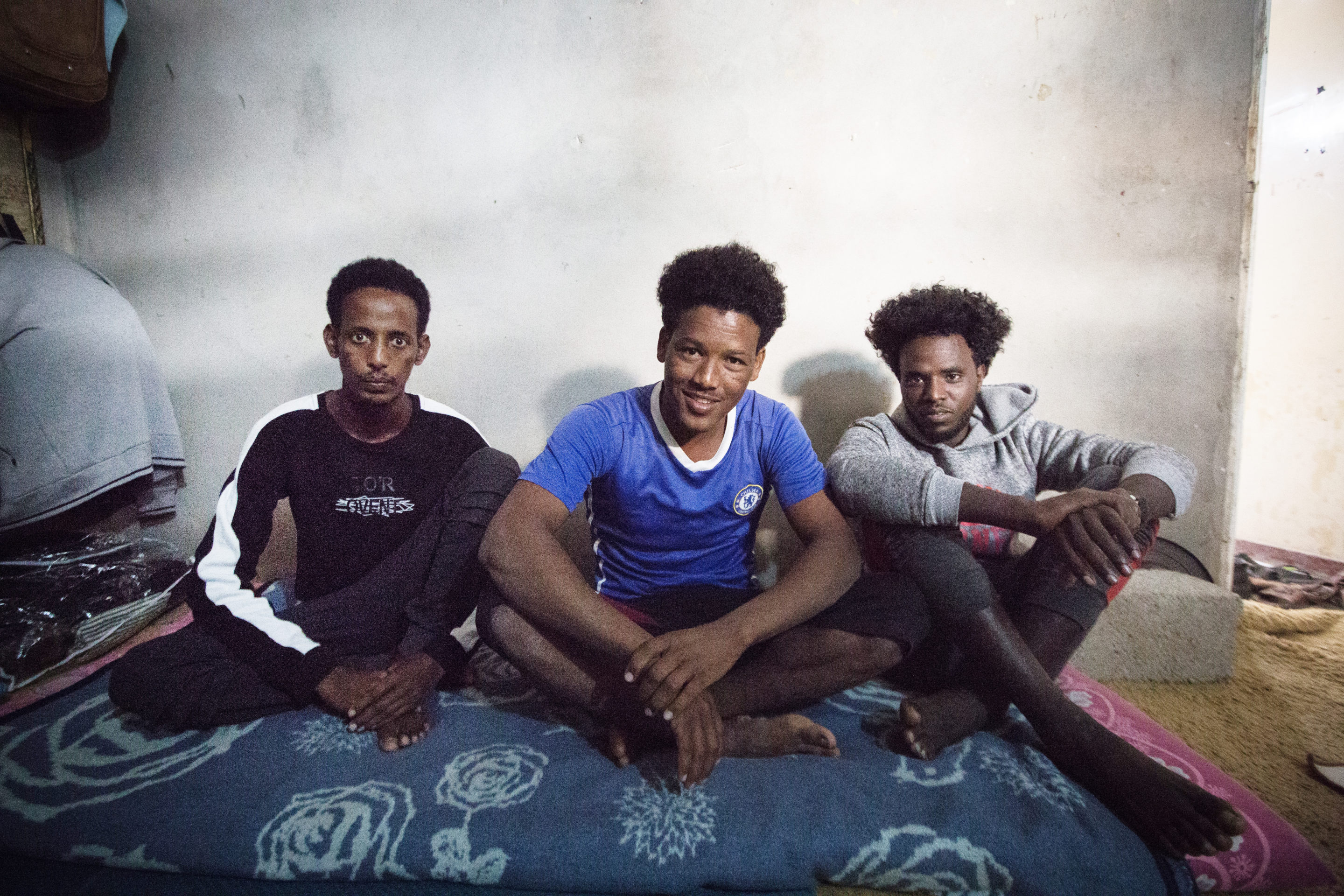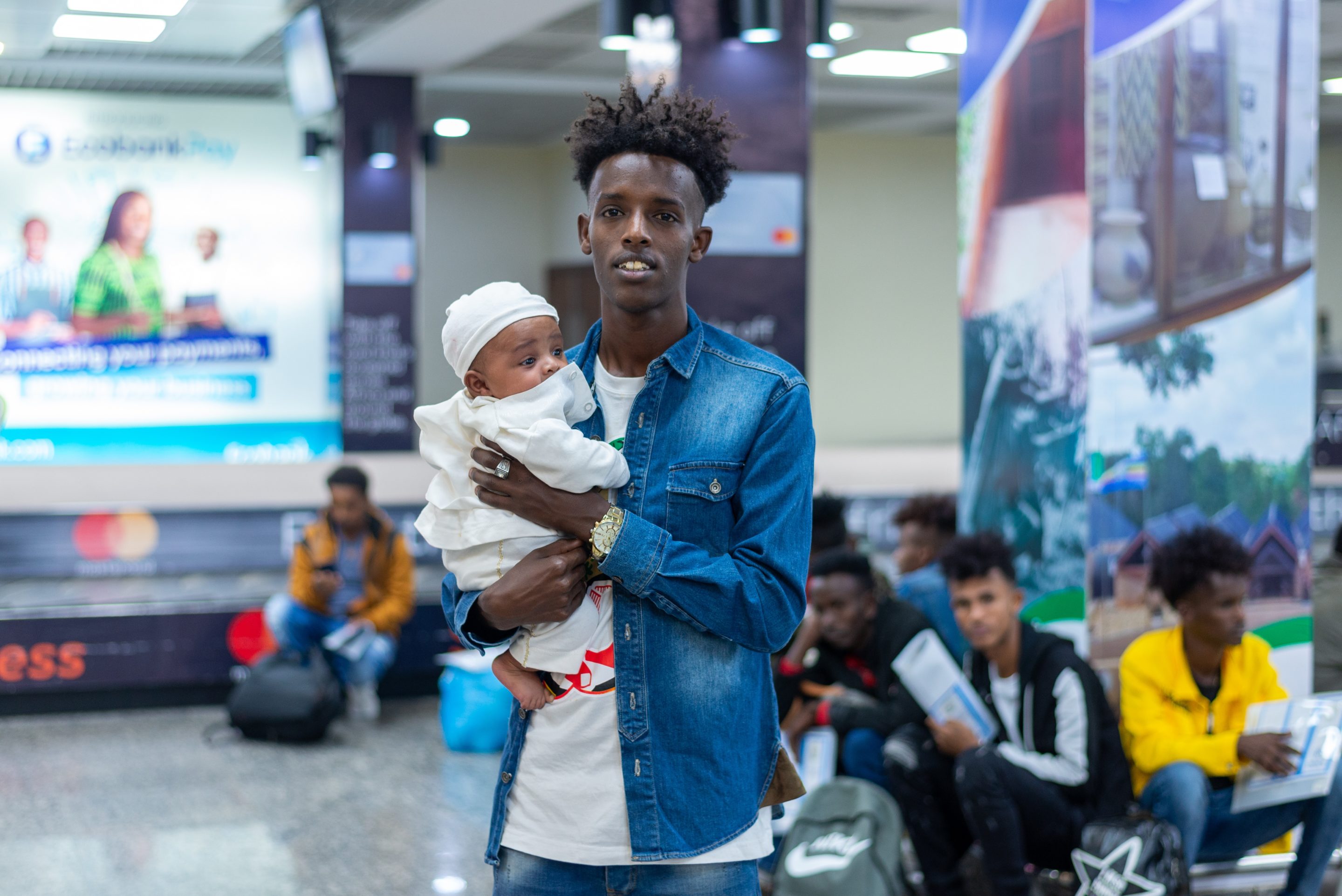
Refugees from Somalia, Syria and Eritrea board a bus at UNHCR’s Gathering and Departure Facility in Tripoli, April 2019. © UNHCR/Mohamed Alalem
In the face of ongoing and intensifying conflict in Libya, UNHCR continues to work with its partners on organizing humanitarian evacuations out of the country. Efforts are being made to identify and prioritize those most in need, often including unaccompanied children, survivors of torture and other abuses. Since the start of the evacuation operation in 2017, more than 4,100 individuals have been brought to safety — including more than 1,500 last year. Now, their journeys begin anew.
“As violence in Tripoli intensifies, these evacuations have never been more urgent.”
Vincent Cochetel, UNHCR Special Envoy for the Central Mediterranean
Abdulbasit, Zainab, and Hadia

©UNHCR/Tobin Jones
Young Somali refugee couple Abdulbasit and Zainab and their two-month-old daughter Hadia are seen on their first day at the Gashora Emergency Transit Centre in Rwanda. They were among 66 highly vulnerable refugees — including 22 children separated from their parents and wider family — evacuated as part of the Emergency Transit Mechanism (ETM). The ETM is an agreement between the Rwandan government, the African Union and UNHCR seeking to move refugees most at risk in Libya to Rwanda. Many suffered human rights abuses, including beatings, extortion and rape during their time held in detention. “I am very happy,” says Zainab. “We had a dream of getting out of Libya and now we are finally able to live in peace.”
Semeren, Fathawey, and Habtom

©UNHCR/ Mohamed Alalem
(From left to right) Semeren, Fathawey and Habtom met during their perilous journey from Eritrea to Libya. They stuck together to survive the torture and abuse they experienced. They gathered money to cross the Mediterranean to Europe, but their boat caught fire in the middle of the sea. While awaiting rescue, they witnessed more than 100 people, children, women and men drown. After more than eight hours at sea, help finally arrived — but they were taken back to Libya and placed in a detention centre where they stayed for months in squalid conditions. After their release, they found a small, barely-furnished room where they stayed while trying to provide for themselves. “The evacuation to Rwanda is a dream come true. We will regain our humanity and our lives will have meaning again.”
Delmar

©UNHCR/Eugene Sibomana
Delmar fled Somalia in 2015 after witnessing the death of his father and older brother at the hands of Al Shabab. To reach Libya, he travelled through war-torn Yemen, then Sudan. Upon arrival in Libya, he was kidnapped and held in the Bani Walid warehouse. Kidnappers demanded money and threatened him with torture, beatings and starvation. With the help of friends and family back home, he managed to collect some money to buy his freedom.


